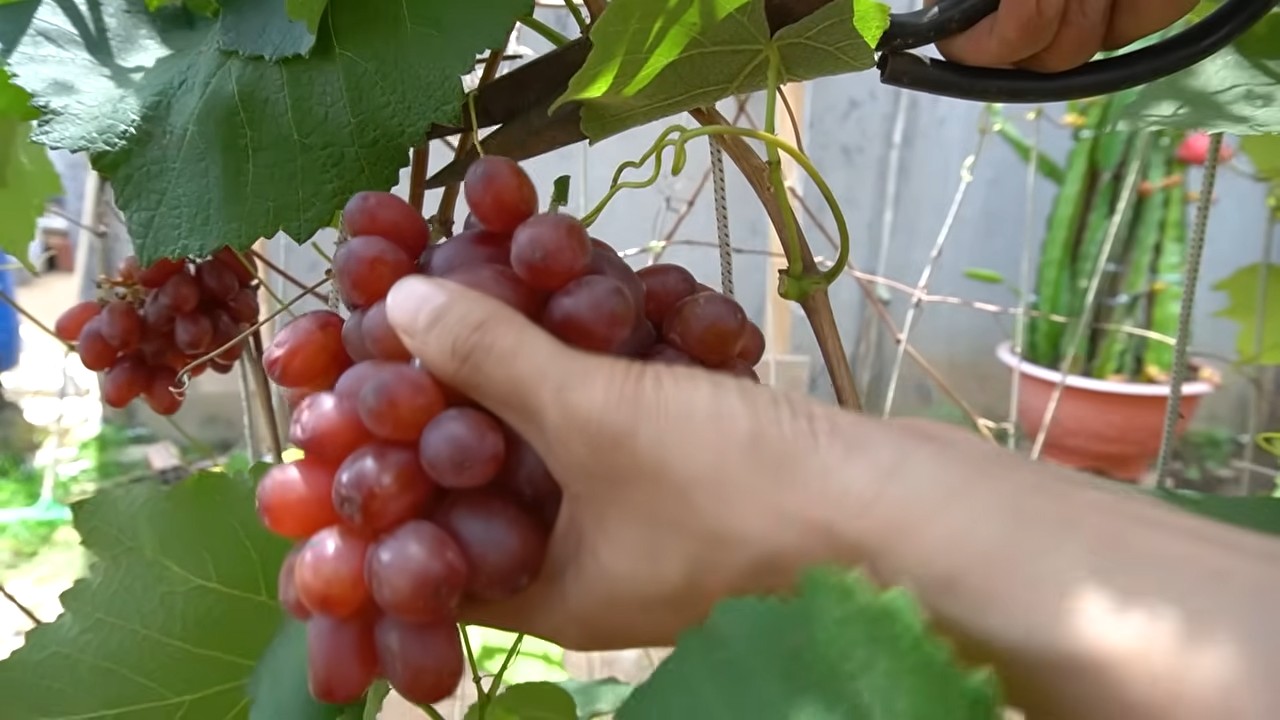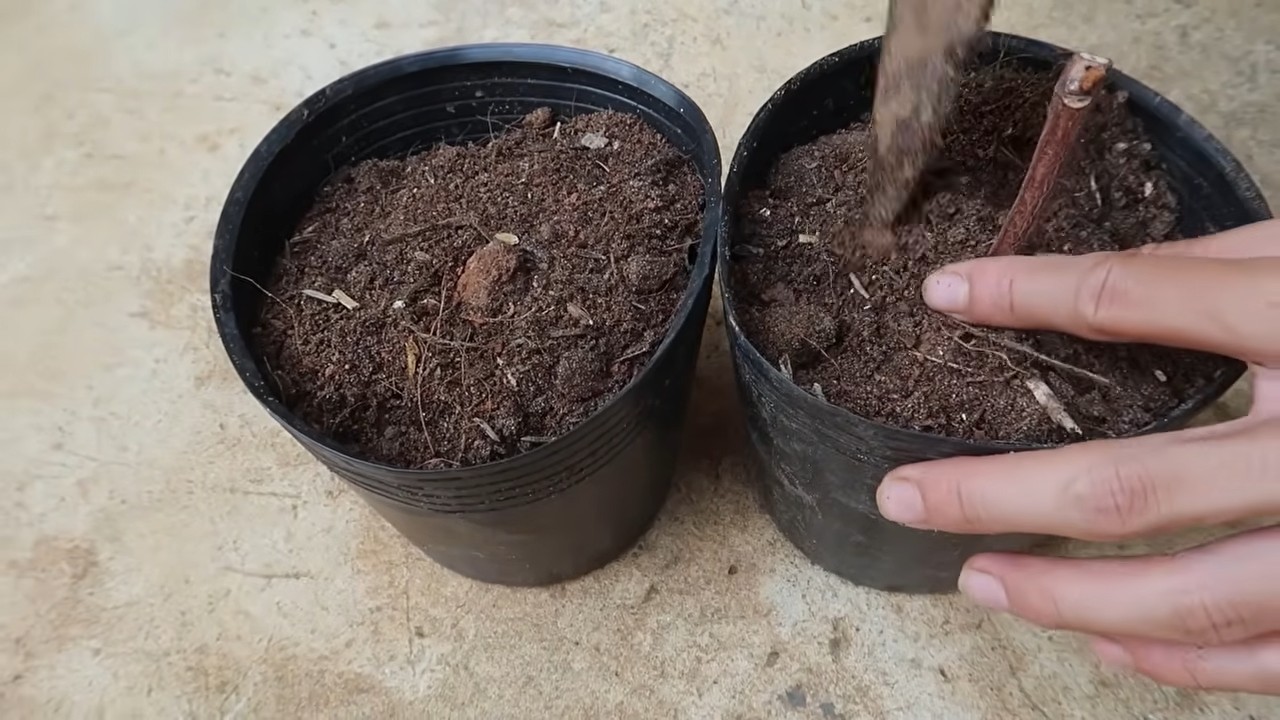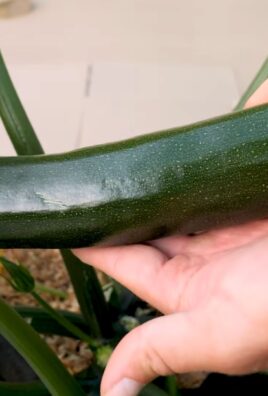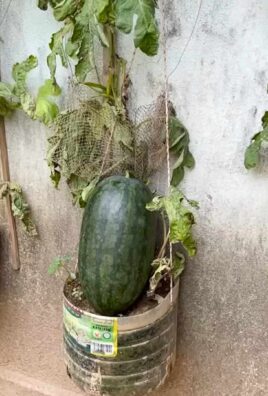Grow backyard grapes easily, you say? Absolutely! Imagine stepping into your own backyard and plucking juicy, sun-ripened grapes straight from the vine. Sounds like a dream, right? Well, it doesn’t have to be! This DIY guide is packed with simple, effective tricks to help you cultivate a thriving grapevine, even if you think you have a “brown thumb.”
Grape cultivation has a rich history, dating back thousands of years. From ancient civilizations using grapes for wine production to families passing down treasured grape-growing secrets, this fruit has always held a special place in our hearts (and on our tables!). But you don’t need to be a seasoned vintner to enjoy the fruits of your labor.
Many people shy away from growing grapes, thinking it’s too complicated or requires acres of land. But that’s simply not true! With the right techniques, you can grow backyard grapes easily in containers, on trellises, or even along a fence. This DIY article will break down the process into manageable steps, offering practical tips and clever hacks to overcome common challenges. Whether you’re dreaming of homemade grape juice, delicious jams, or simply adding a touch of rustic charm to your garden, this guide will empower you to achieve your grape-growing goals. So, grab your gardening gloves, and let’s get started!

Growing Grapes in Your Backyard: A Beginner’s Guide
Hey there, fellow garden enthusiasts! Ever dreamt of strolling through your own backyard vineyard, plucking juicy grapes straight from the vine? Well, guess what? It’s totally achievable, even if you’re a complete beginner like I was! Growing grapes might seem intimidating, but with a little know-how and some patience, you can be enjoying homegrown grapes in a few years. I’m going to walk you through everything I learned, from choosing the right variety to pruning like a pro (well, almost!).
Choosing the Right Grape Variety
This is arguably the most important step. You can’t just plant any grape and expect it to thrive. You need to consider your climate, soil conditions, and what you plan to do with the grapes.
* Climate: Grapes are generally categorized as either European (Vitis vinifera) or American (Vitis labrusca) varieties. European grapes are known for their wine-making qualities but are more susceptible to diseases and require warmer, drier climates. American grapes are hardier and more disease-resistant, making them a better choice for colder regions. There are also hybrid varieties that combine the best of both worlds.
* Soil: Grapes prefer well-drained soil with a slightly acidic pH (around 6.0-7.0). If your soil is heavy clay, you’ll need to amend it with organic matter to improve drainage.
* Purpose: Are you planning to make wine, juice, or just eat them fresh? Different varieties are better suited for different purposes. Table grapes are typically larger and sweeter, while wine grapes have a higher sugar content and more complex flavors.
Here are a few popular and relatively easy-to-grow grape varieties:
* Concord: A classic American grape, known for its distinctive flavor and used in juice, jelly, and wine. Very hardy and disease-resistant.
* Niagara: Another American grape, similar to Concord but with a lighter, sweeter flavor. Great for fresh eating and juice.
* Reliance: A seedless table grape that’s very cold-hardy. Produces sweet, flavorful grapes.
* Thompson Seedless: The most popular seedless table grape, but it requires a warmer climate.
* Cabernet Sauvignon: A popular red wine grape, best suited for warmer climates.
* Chardonnay: A popular white wine grape, also best suited for warmer climates.
Once you’ve considered these factors, head to your local nursery or online retailer and choose a variety that’s right for you. Make sure to buy certified disease-free vines.
Preparing the Planting Site
Grapes need plenty of sunlight and well-drained soil. Choose a location that gets at least 6-8 hours of direct sunlight per day.
* Soil Testing: Before you start digging, it’s a good idea to test your soil. You can buy a soil testing kit at your local garden center or send a sample to your local agricultural extension office. This will tell you the pH of your soil and whether you need to add any amendments.
* Clearing the Area: Remove any grass, weeds, rocks, and other debris from the planting area.
* Soil Amendment: If your soil is heavy clay or sandy, you’ll need to amend it with organic matter. Add compost, well-rotted manure, or peat moss to improve drainage and fertility. Dig the amendments into the soil to a depth of at least 12 inches.
* Spacing: Grape vines need plenty of space to grow. Space them 8-10 feet apart in rows that are 10-12 feet apart. This will allow for good air circulation and sunlight penetration.
Planting Your Grape Vines
Now for the fun part! Planting your grape vines is relatively easy, but it’s important to do it correctly to ensure they get off to a good start.
1. Soaking the Roots: Before planting, soak the roots of your grape vines in water for 1-2 hours. This will help them rehydrate and get ready to grow.
2. Digging the Hole: Dig a hole that’s twice as wide as the root ball and just as deep.
3. Positioning the Vine: Carefully remove the grape vine from its container and gently loosen the roots. Place the vine in the hole, making sure that the top of the root ball is level with the ground.
4. Backfilling the Hole: Backfill the hole with soil, gently tamping it down around the roots.
5. Watering: Water the newly planted vine thoroughly.
6. Mulching: Apply a layer of mulch around the base of the vine to help retain moisture and suppress weeds. Use organic mulch such as straw, wood chips, or shredded bark. Keep the mulch a few inches away from the trunk of the vine to prevent rot.
7. Staking: Young grape vines need support to grow upright. Install a stake next to the vine and tie the main stem to the stake with soft twine.
Training and Pruning Your Grape Vines
This is where things get a little more complicated, but don’t worry, I’ll break it down for you. Training and pruning are essential for shaping your grape vines, maximizing fruit production, and preventing disease.
Year 1: Establishing the Trunk
The first year is all about establishing a strong trunk.
1. Choose the Strongest Shoot: Select the strongest, most upright shoot on the vine. This will become the main trunk.
2. Remove Other Shoots: Remove all other shoots that are growing from the base of the vine.
3. Tie to the Stake: Continue to tie the main shoot to the stake as it grows.
4. Pinch Back Side Shoots: As the main shoot grows, it will produce side shoots. Pinch these back to 2-3 leaves to encourage the main shoot to grow taller.
5. Cut Back in Late Winter: In late winter, after the first frost, cut back the main shoot to about 2-3 feet. This will encourage it to branch out in the spring.
Year 2: Developing the Arms (Cordons)
In the second year, you’ll start to develop the arms (cordons) of the vine. These are the horizontal branches that will produce the fruiting shoots.
1. Choose Two Strong Shoots: In the spring, two strong shoots will emerge from the top of the main trunk. These will become the cordons.
2. Train Horizontally: Train these shoots horizontally along a wire or trellis. You can use soft twine to tie them to the wire.
3. Remove Other Shoots: Remove any other shoots that are growing from the trunk below the cordons.
4. Pinch Back Side Shoots: As the cordons grow, they will produce side shoots. Pinch these back to 2-3 leaves.
5. Cut Back in Late Winter: In late winter, cut back the cordons to about 3-4 feet each.
Year 3 and Beyond: Fruiting and Maintenance Pruning
In the third year, your grape vines should start to produce fruit. From this point on, you’ll need to prune them annually to maintain their shape and maximize fruit production.
1. Fruiting Shoots: Grapes are produced on shoots that grow from the previous year’s growth. These are called fruiting shoots.
2. Spur Pruning: This is the most common pruning method for grapes. It involves cutting back the fruiting shoots to short spurs with 2-3 buds each.
3. Cane Pruning: This method involves selecting a few strong canes (long, one-year-old shoots) and cutting them back to 8-10 buds each. This method is typically used for varieties that produce fruit on the middle of the cane.
4. Timing: Prune your grape vines in late winter or early spring, before the buds start to swell.
5. Remove Dead or Diseased Wood: Always remove any dead, diseased, or damaged wood.
6. Thinning: If your grape vines are producing too much fruit, you can thin out the clusters to improve the size and quality of the remaining grapes.
Important Pruning Tip: Always use sharp, clean pruning shears to prevent the spread of disease.
Watering and Fertilizing
Grapes need consistent watering, especially during dry periods. Water deeply and regularly, especially during the first year.
* Watering: Water your grape vines deeply once a week, or more often during hot, dry weather.
* Fertilizing: Fertilize your grape vines in the spring with a balanced fertilizer. Follow the instructions on the fertilizer label. You can also add compost or well-rotted manure around the base of the vines.
Pest and Disease Control
Grapes can be susceptible to a variety of pests and diseases. Here are a few common problems and

Conclusion
So, there you have it! Growing backyard grapes easily is not just a pipe dream; it’s an achievable reality with a little planning, patience, and the right approach. We’ve explored the key steps, from selecting the perfect grape variety for your climate and soil to providing the necessary support and care for a thriving vine. The beauty of this DIY project lies not only in the delicious, homegrown grapes you’ll harvest but also in the satisfaction of nurturing something from the ground up.
This isn’t just about saving money on store-bought grapes; it’s about connecting with nature, understanding the growing process, and enjoying the unparalleled flavor of fruit ripened under your own care. Imagine the joy of sharing your bounty with friends and family, knowing that you cultivated those grapes with your own hands.
Don’t be afraid to experiment! Consider different training methods to maximize sunlight exposure and airflow. Perhaps you’d like to try growing different varieties of grapes side-by-side to compare their flavors and characteristics. You could even explore creating your own grape juice, jelly, or even wine (where legally permitted, of course!). The possibilities are endless.
Remember, success in growing backyard grapes easily hinges on consistent care and attention. Regularly check your vines for pests and diseases, prune them diligently to encourage fruit production, and provide adequate water and nutrients. With a little effort, you’ll be rewarded with a bountiful harvest year after year.
We wholeheartedly encourage you to embark on this rewarding journey. Take the plunge, get your hands dirty, and experience the magic of growing your own grapes. And most importantly, share your experiences with us! We’d love to hear about your successes, challenges, and any unique tips or tricks you discover along the way. Post photos of your vines, share your favorite grape recipes, and let’s create a community of backyard grape growers! Your insights could inspire others to take the leap and discover the joy of homegrown grapes. So, what are you waiting for? Get planting!
Frequently Asked Questions (FAQ)
What are the best grape varieties to grow in my backyard?
The best grape varieties depend heavily on your climate and growing conditions. Generally, for cooler climates, consider varieties like ‘Reliance’ (seedless red), ‘Marquette’ (red wine grape), or ‘Frontenac’ (red wine grape). For warmer climates, ‘Thompson Seedless’ (green seedless), ‘Flame Seedless’ (red seedless), or ‘Muscadine’ varieties (various colors and flavors) are good choices. Research varieties specifically recommended for your region by your local agricultural extension office or nursery. They can provide tailored advice based on your specific location and soil type. Consider disease resistance as well; some varieties are naturally more resistant to common grape diseases like powdery mildew and black rot.
How much space do I need to grow grapes?
Grape vines need considerable space to thrive. A single vine can easily spread 8-10 feet wide, and some varieties even more. Plan for at least 8 feet between vines in a row and 10-12 feet between rows. Consider the mature size of the variety you choose when planning your vineyard layout. If you have limited space, consider training your vines on a trellis or arbor to maximize vertical growth and minimize horizontal spread. Container gardening is also an option for smaller spaces, but you’ll need to choose a dwarf or compact variety and provide regular pruning.
What kind of soil is best for growing grapes?
Grapes prefer well-drained soil with a slightly acidic to neutral pH (around 6.0-7.0). Heavy clay soils can be problematic because they retain too much water, which can lead to root rot. Sandy soils, on the other hand, may drain too quickly and require more frequent watering. Amend your soil with organic matter, such as compost or well-rotted manure, to improve drainage, fertility, and water retention. A soil test is highly recommended to determine your soil’s pH and nutrient levels. This will allow you to make targeted amendments to create the ideal growing environment for your grapes.
How often should I water my grape vines?
Watering frequency depends on your climate, soil type, and the age of your vines. Young vines need more frequent watering than established vines. In general, water deeply but infrequently, allowing the soil to dry out slightly between waterings. During hot, dry periods, you may need to water more frequently. Avoid overwatering, as this can lead to root rot. A good rule of thumb is to provide about 1-2 inches of water per week, either through rainfall or irrigation. Mulching around the base of the vines can help retain moisture and reduce the need for frequent watering.
When and how should I prune my grape vines?
Pruning is essential for grape production. The best time to prune is during the dormant season, typically in late winter or early spring before new growth begins. The goal of pruning is to remove excess growth and encourage fruit production on the current year’s shoots. There are several different pruning methods, including cane pruning and spur pruning. The best method depends on the variety of grape you are growing. Research the recommended pruning method for your specific variety and follow it carefully. Improper pruning can significantly reduce your grape yield.
How do I protect my grapes from pests and diseases?
Grapes are susceptible to a variety of pests and diseases, including Japanese beetles, grape phylloxera, powdery mildew, and black rot. Monitor your vines regularly for signs of infestation or disease. Implement preventative measures, such as spraying with organic fungicides or insecticides, if necessary. Encourage beneficial insects, such as ladybugs and lacewings, to help control pest populations. Proper pruning and good air circulation can also help prevent fungal diseases. Consider using netting to protect your grapes from birds and other animals.
How long does it take for grape vines to produce fruit?
Grape vines typically take 2-3 years to begin producing fruit. The first year is focused on establishing the root system and vine structure. The second year, you may see some small clusters of grapes, but the yield will likely be limited. By the third year, you should have a more substantial harvest. Full production is usually reached in 4-5 years. Be patient and continue to provide proper care, and you will be rewarded with a bountiful harvest in due time.
Can I grow grapes in containers?
Yes, you can grow grapes in containers, but it requires careful planning and attention. Choose a dwarf or compact grape variety that is well-suited for container growing. Use a large container (at least 15-20 gallons) with good drainage. Fill the container with a well-draining potting mix amended with compost. Provide regular watering and fertilization. Prune the vines regularly to control their size and shape. Container-grown grapes may require more frequent watering and fertilization than grapes grown in the ground.
What kind of support system do grape vines need?
Grape vines need a strong support system to climb and spread. A trellis is a common and effective option. You can build a simple trellis using wooden posts and wires, or you can purchase a pre-made trellis from a garden center. An arbor is another option that provides shade and visual appeal. You can also train grape vines along a fence or wall. The key is to provide a sturdy structure that can support the weight of the vines and the grapes.
How do I know when my grapes are ripe?
Determining when grapes are ripe can be tricky, but there are several indicators to look for. The color of the grapes should be uniform and characteristic of the variety. The grapes should be plump and juicy, and they should detach easily from the stem. Taste is the most reliable indicator of ripeness. Sample a few grapes from different parts of the vine. They should be sweet and flavorful, with a balanced acidity. Use a refractometer to measure the sugar content (Brix) of the grapes for a more precise assessment of ripeness.




Leave a Comment